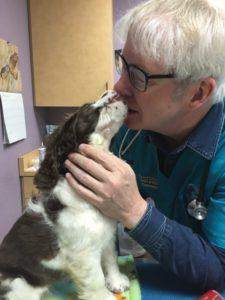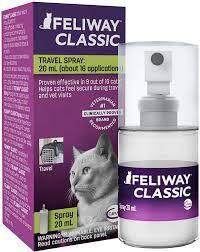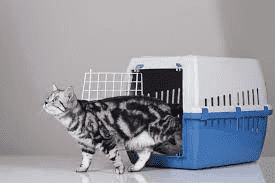Fear and anxiety during visits to your veterinarian may be a normal reaction for pets. No one, including people, like to be examined and potentially have treatments performed in a new environment. Unlike people, your animal companion doesn’t know why he or she is at the veterinarian and that what is being done is for their health.

Fear during veterinary visits leads to patient distress, discomfort, and can result in behavioral issues for future examination. It is important to examine fear and anxiety quickly so it doesn’t progress over time. Fear puts the veterinary staff and even pet owners at risk during examinations.
Owners may be hesitant to take their pets to the doctor just to avoid the experience. If your pet is scared and misbehaves, it is nothing to be embarrassed about. Most veterinarians and veterinary staff are experienced in handling anxious pets.
What is important to consider, is that there are several ways to provide a low-stress experience. Creating that experience is a team effort between you and staff.
Body Language
Reading pet body language appropriately is the key to less stress. Handling can then be adjusted based on what the pet’s body language is saying. If the early signs of stress are ignored your pet’s behavior may escalate. Since animals learn from experience, they may skip the earlier signs entirely at the next visit, intensifying to more aggressive behaviors.
Preparation
You know your pet better than anyone else. Talk to the veterinary staff and the veterinarian about your pet’s behavior prior to your animal companion being examined.
Part of making visits more pleasant involves making transportation comfortable. For example, cats can learn how to be more comfortable entering and riding in their carriers. Carriers with tops that are easily removed are best.
Feline phermones cush as Feliway sprays can be applied to your cat’s bedding in the carrier to reduce anxiety in the car. In some cases, anti-anxiety medications can help. Calming music and talking to your pet during car rides can help them focus on other things and tune out road noise.

Stop-by Fun Visits
Sometimes, fun, procedure-free happy visits are a tool you can use to make your pet feel more comfortable at the hospital. Talk to the veterinary staff and plan a visit to the practice when they are quiet. Your pet can come in, walk around, receive treats and be pet by the team without having anything perceived as negative performed. This can enhance your pet’s perception of the practice.
What to Look for at the Veterinary Practice”
- Short wait times in the waiting room can reduce stress.
- Some facilities have separate cat and dog waiting areas and exam rooms. Dogs should not be allowed into the cat rooms. If a facility is too small or not set up for this, they may have you wait in your car until a dedicated exam room is ready.
- Pheromone diffusers (Feliawy for cats, Adaptil for dogs) can be used in waiting rooms and exam rooms, and pheromone sprays can be applied to towels before use.
- Exam rooms and waiting areas should be cleaned and sanitized to prevent disease transmission and reduce stressful scents, such as alarm pheromones or bodily secretions.
- Treats and gentle handling are also essential in reinforcing a positive visit experience.
Treats During Exams
Bring your pet’s favorite treats. While waiting and during the exam, frozen Kong treats or lick mats can help form positive associations with the hospital. The veterinary practice may also have treats for your pet. there are cat and dog high value treats, which may be offered during examination

In the Exam Room
Examining dogs and cats with your present and gentle handling while treats are offered is usually less stressful. Many dogs and cats do better if they can stay with you during the exam.

Cats should never be dumped out of their carrier. Once in the closed exam room open the carrier and allow your cat to explore the room on their own. If your pet will not come out within a few minutes, take the carrier apart so they can stay in the bottom.
The veterinarian or veterinary staff can place a towel over their body or head which can help them feel more secure. If the patient is a dog that can be aggressive for fear or other issues, a basket muzzle can be used so they can pant, take treats and remain comfortable yet still keep the veterinarian and staff safe.

and stay comfortable but still protect others if they try and bite
Always consider whether the planned procedures need to be completed that day or can wait. If your pet’s stress level is escalating, discontinuation of the exam or procedure may be beneficial vs pushing you anxious pet to take more.
If the treatments or diagnostics cannot, ask about taking a break or ask if sedation can be used. In some cases, anti-anxiety medications given 90 minutes before a planned stressful event can be useful. Your veterinarian may offer this but you should feel free to inquire.
Lastly, if behavior is escalating and extends beyond trips to the veterinarian, you may ask be referred to a veterinary behaviorist. These are veterinarians that have three years of special training in an accredited residency program in many aspects of pet behavior.
Veterinary visits may not be the highlight of your pet’s day (though it might be) but it shouldn’t be prohibitively stressful. Talk with your veterinarian about things that can be done to help reduce stress and make the visits more fun and relaxing.


